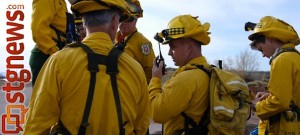
IVINS – Multiple fire departments from southwest Utah’s five-county area (Beaver, Garfield, Iron, Kane and Washington counties) took part in wildland-urban interface training exercises in Santa Clara and Ivins Saturday. The training was timed to prepare firefighters for the coming fire season, build interagency relations and review how to best deal with wildfires where human habitation and wildlands – uninhibited land forested with anything from brush to trees – intersect.
The inter-agency training is hosted through the Utah Division of Forestry, Fire and State Lands and has been funded through a federal grant program.
Steve Ikuta, emergency management coordinator for Intermountain Healthcare’s southwest region, participated in the training and said an estimated 120 firefighters, the great majority of whom were volunteers, were involved in the day’s exercises.
(Story continues below)
Video by Sarafina Amodt, St. George News
Wildland firefighters are largely volunteer
Adam Heyder, Washington County fire warden for the Utah Division of Forestry, Fire and State Lands, said at least 95 percent of the trainees in attendance were volunteers.
All volunteers must become “Red Card” certified. To do so, they receive basic classroom training, undergo hands-on training and must pass the “pack test” – carrying a 45 pound pack over three miles in 45 minutes or running 1.5 miles in about 11.75 minutes.
Once certified, volunteers can obtain additional specializations adding to tasks they are qualified to perform. Most departments have a weekly training night that the volunteers attend, Heyder said, and they are all required to recertify annually; they must again pass the pack test, go through a four-hour refresher course reviewing current issues, risk management and must demonstrate a familiar use of the fire shelter pack carried on their backs for survival – shake it out, crawl into it, lie face down on the ground.
“It’s a last resort,” Heyder said of the fire shelter pack, “it could be the difference between life and death.”
Volunteers come in all ages. The average age of the Pine Valley Volunteer Fire Department, for example, is 63, Heyder said, representing an area that draws retiree residents. Michael Margulies recently got his “Red Card” and joined Pine Valley’s department upon moving there from Silicon Valley, California, where he previously worked for Apple. Volunteering is not new to Margulies; he fought California wildfires through its state reserve.
This great force of volunteers cannot be said to be in it for the money. Many are not compensated at all, some only minimally. While the City of St. George offers medical benefits to its volunteer fire fighters, other cities, like Santa Clara only pay $8-$15 per call depending on whether it is a municipal or wildland incident, Santa Clara Fire Chief Dan Nelson said.
Many of these volunteers not only make themselves available for local incidents but go out nationally, engine(s) and crew, when needed. A team from Hurricane went to Nebraska last year, as one example. Training exercises like Saturday’s afford the added mutual benefit of these teams sharing and discussing experiences and situations they have encountered from extraordinary response calls.
Wildland Urban Interface Training brought a representative sample
Only a fraction of the five-county region’s firefighting forces were present. Heyder said fire departments had sent select members of their crews to the trainings with the anticipation of their sharing what they learned with the rest of the department when they returned.
“If we had everyone here that would be 1,000 people,” Nelson said.
Tradition of training fosters interagency cooperation
Heyder said the interagency training has been held for the last six years. A purpose of the training is to foster interagency cooperation, particularly with federal agencies like the Bureau of Land Management and U.S. Forest Service.
Members of the U.S. Forest Service were present at the training and oversaw at least one of the three training exercises.
Last year Santa Clara and Ivins fire departments worked closely with the BLM during the numerous fires that occurred in their area.
“The feds only have so many fire engines,” Heyder said. The better the local, rural agencies work with the federal ones, the better for putting out fires more effectively.
Nelson said he likes to call them examples of “interoperability.”
“Being able to have that relationship with other departments is key,” he said.
The training exercises
Sand tabletop
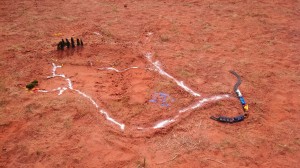
Ikuta ran what he called a “sand tabletop evolution,” a sandbox interactive exercise in which he had a group of firefighters surround a fire situation laid out like a relief map in the sand, with matchbox fire engines and plastic Monopoly-board houses placed around sand hills and valleys depicting an urban interface with wildland. The group offered strategies, objectives and resource implementation in given circumstances.
“This is a training exercise and I’m going to make it so you fail,” Ikuta said to one division going through the sand tabletop exercise. “Because, if it all goes smooth, you’re going to walk away and say hey, I didn’t learn anything. You’re going to walk away and say, that was tough, but I learned something.”
As the group went through a real-life scenario, Ikuta demonstrated how a wildfire had been handled and resulted in the death of two firefighters because of poor communication, among other factors.
Firefighter safety was a recurring theme of the training, with emphasis on things like “stay in the black” (the area already burned being a safe zone), situating fire engines in a way that they have rapid access out of a fire zone, assessing resources
Water drafting
At the Ivins reservoir, the firefighters were trained on how to pump water from a large body of water for their fire engines in a process called “drafting.”
Structure protection
The third exercise, which was conducted by the U.S. Forest Service, involved structure protection within what is called the “wildland-urban interface.” The “interface” is where human habitation mixes with the wilderness.
The spot used as for the interface exercise was a collection of homes in Kayenta. Firefighters were showed the homes they would be defending and were asked to consider what actions they could take to save those homes.
Elements discussed during the training for triaging area homes – determining whether or not a home could he saved during an active incident – included appraisal of many factors. The following are a few considerations:
- Defensible space: Is there a barrier between the home and combustible materials? Could one be created in time to protect the home?
- Fire-resistant or fire-friendly landscaping: What are the fuel sources near to the home? Can limbs on proximate trees be removed to prevent ground level fire from climbing to the treetops? Are there branches overhanging the driveway or roof?
- What resources are available to help fight a potential fire? Are there any fire hydrants or general supply of water nearby? In an area such as Kayenta, both hydrants and the Ivins reservoir are present. Swimming pools are also fair game for water drafting in an emergency.
- What building material is the home made of? Are there decks / stilts? Is the roof made of combustible material such as singles or wood? Some materials burn slower than others. Stucco, for example, is fire resistant but not fireproof. But the trainees were told to observe things like wood beams extending from the stucco – although they could be a face-only décor, they could also extend into the primary structure providing accelerated access for a fire into the home.
Firefighters were reminded that most structures burn after the flame front goes through an area. So, like the “stay in the black” mantra, they were instructed to come back to homes after that front has moved through for fire prevention and response – that is when the embers are likely to ignite a home into flames.
On doing structure triage, firefighters make their appraisal and typically tag homes with colored tapes at the driveway entrance, main road access, indicating one of three categories: (1) needs little or no attention, (2) needs protection, or (3) cannot be saved. But Charles Peterson, assistant to the Washington County fire warden, said that color tagging was not as important as insuring a message is communicated. Pink tape might be used rather than an areas green, yellow, red scheme, as long as it is visible and contains a message on it with a magic marker.
In a companion report to this one, the training officers provide tips for home residents that can mitigate fire susceptibility.
Previous and forthcoming fire seasons
In 2012, the five-county region saw 95 wildfires in unincorporated and federal land areas, Heyder said, and gave an educated guess that cities saw another 30-40 brush fires. Those numbers were down from the prior year because there were not as many human-caused fires – natural causes are attributed to lightning strikes.
The biggest deterrent for wildland fires is starts, Heyder said. In 2011, many of the fires were human caused: Machinery-generated sparks, trailer chains sparking, failure to follow fire restrictions and the like. In 2012, those starts were down.
Heyder said Utah has experienced less snowpack this winter than expected, meaning vegetation and other potential fire-fuels will dry out more quickly than hoped. This has led state officials to predict a potentially bad fire season, though Heyder said it hard to say how things could turn out.
“I’m expecting a very busy fire season,” Nelson said.
Due to sequestration cuts from the federal government, Heyder said not as many season firefighters and resources may be available as before. However, he also said he expects the fire season to be “business of usual” once it officially begins in May.
Click on photo to enlarge it, then use your left-right arrow keys to cycle through the gallery.
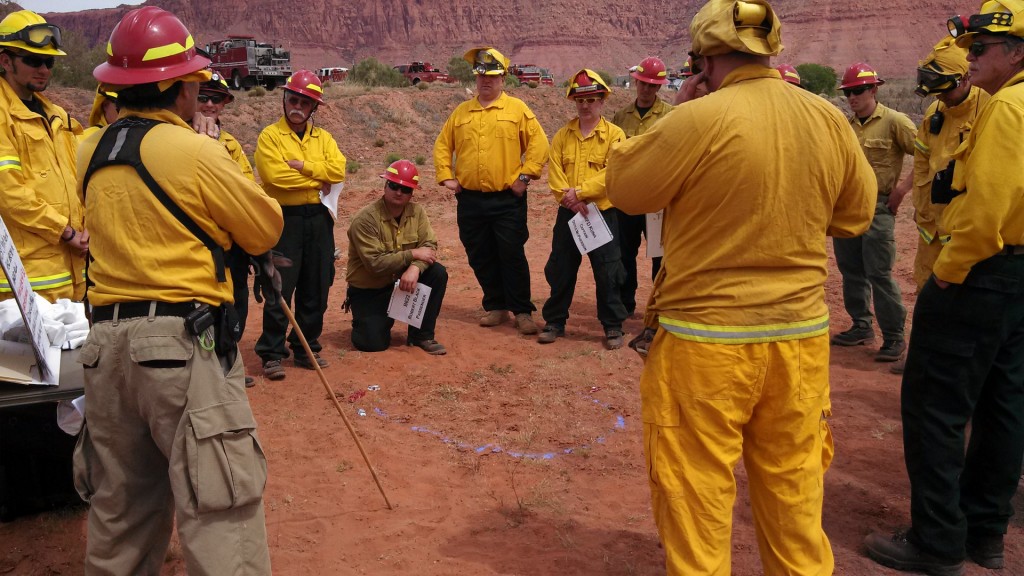
The "sand tabletop evolution exercise." Wlildland-urban interface firefighting training for southern Utah's five county region held in Santa Clara and Ivins, Utah, April 13, 2013 | Photo by Mori Kessler, St. George News

The "sand tabletop evolution exercise." Wlildland-urban interface firefighting training for southern Utah's five county region held in Santa Clara and Ivins, Utah, April 13, 2013 | Photo by Mori Kessler, St. George News

The "sand tabletop evolution exercise." Wlildland-urban interface firefighting training for southern Utah's five county region held in Santa Clara and Ivins, Utah, April 13, 2013 | Photo by Mori Kessler, St. George News

The "sand tabletop evolution exercise." Wlildland-urban interface firefighting training for southern Utah's five county region held in Santa Clara and Ivins, Utah, April 13, 2013 | Photo by Mori Kessler, St. George News
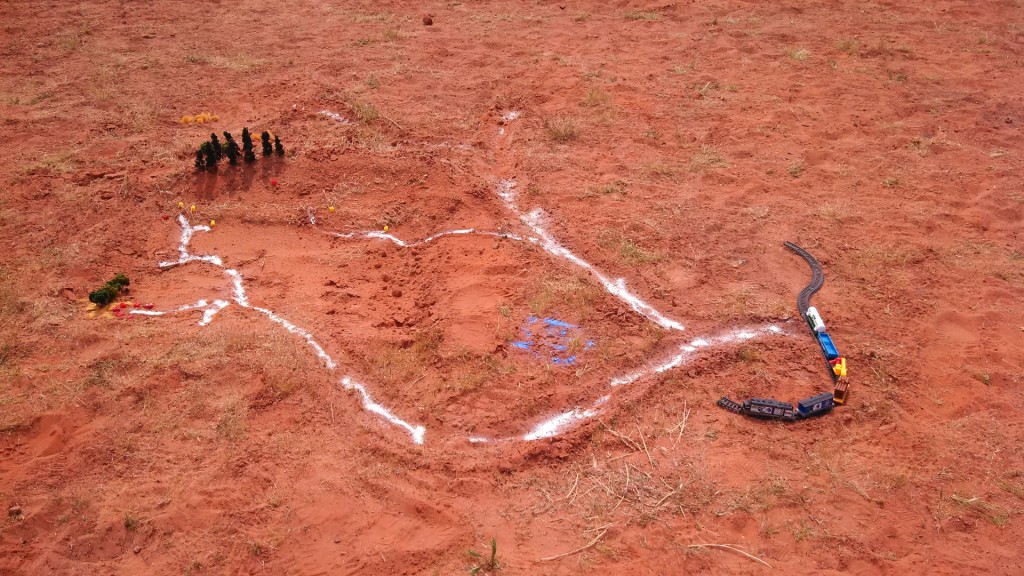
The "sand tabletop evolution exercise." Wlildland-urban interface firefighting training for southern Utah's five county region held in Santa Clara and Ivins, Utah, April 13, 2013 | Photo by Mori Kessler, St. George News

The "sand tabletop evolution exercise." Wlildland-urban interface firefighting training for southern Utah's five county region held in Santa Clara and Ivins, Utah, April 13, 2013 | Photo by Mori Kessler, St. George News

Wlildland-urban interface firefighting training for southern Utah's five county region held in Santa Clara and Ivins, Utah, April 13, 2013 | Photo by Mori Kessler, St. George News
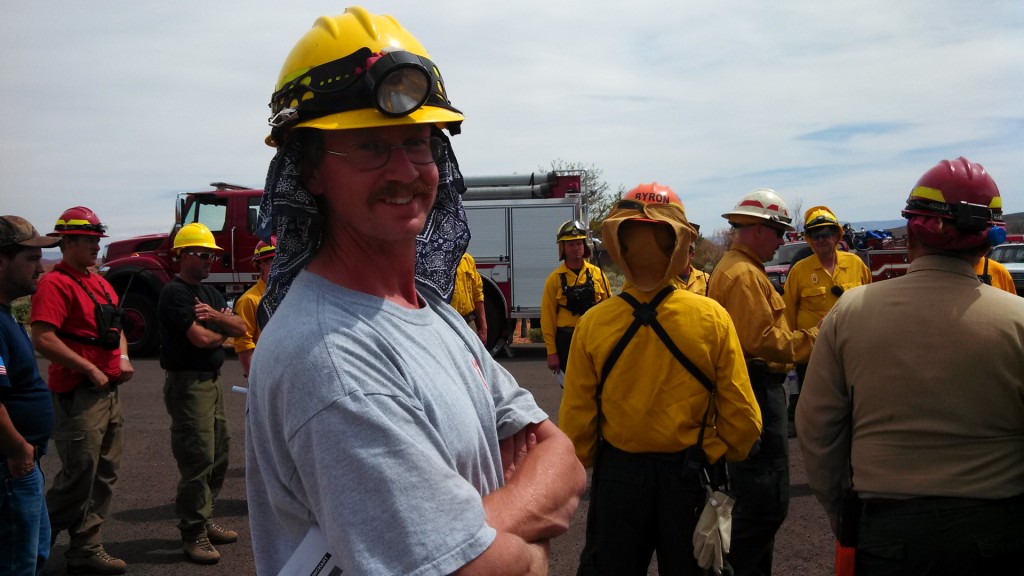
Wlildland-urban interface firefighting training for southern Utah's five county region held in Santa Clara and Ivins, Utah, April 13, 2013 | Photo by Mori Kessler, St. George News

Wlildland-urban interface firefighting training for southern Utah's five county region held in Santa Clara and Ivins, Utah, April 13, 2013 | Photo by Mori Kessler, St. George News

Wlildland-urban interface firefighting training for southern Utah's five county region held in Santa Clara and Ivins, Utah, April 13, 2013 | Photo by Mori Kessler, St. George News

Wlildland-urban interface firefighting training for southern Utah's five county region held in Santa Clara and Ivins, Utah, April 13, 2013 | Photo by Mori Kessler, St. George News
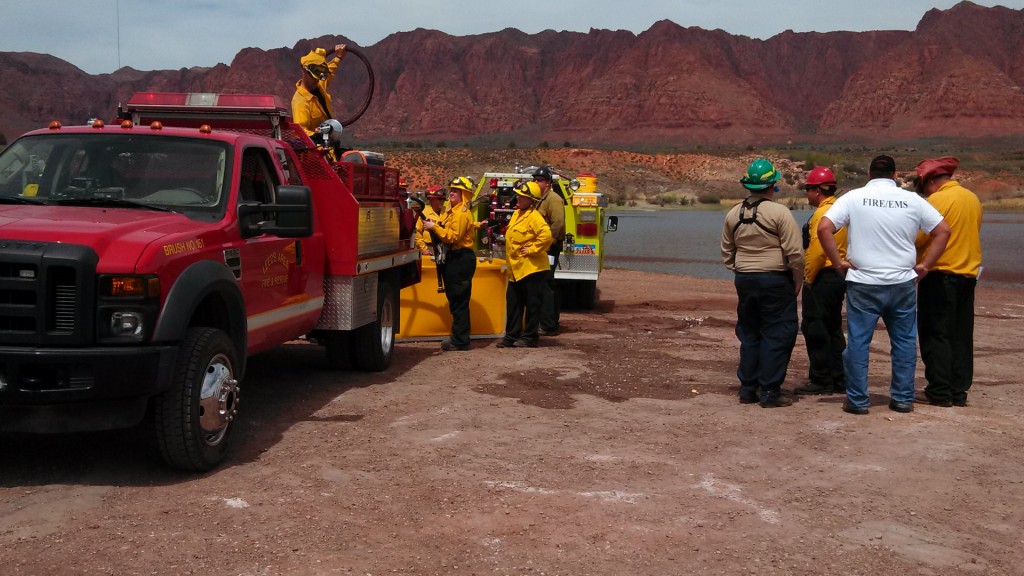
Water drafting exercises. Wlildland-urban interface firefighting training for southern Utah's five county region held in Santa Clara and Ivins, Utah, April 13, 2013 | Photo by Mori Kessler, St. George News

Water drafting exercises. Wlildland-urban interface firefighting training for southern Utah's five county region held in Santa Clara and Ivins, Utah, April 13, 2013 | Photo by Mori Kessler, St. George News
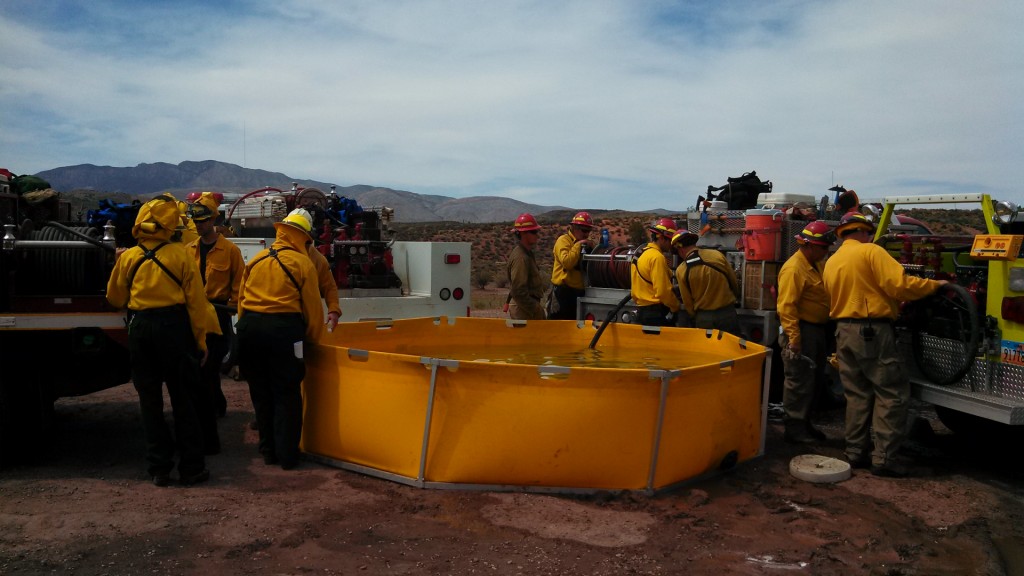
Water drafting exercises. Wlildland-urban interface firefighting training for southern Utah's five county region held in Santa Clara and Ivins, Utah, April 13, 2013 | Photo by Mori Kessler, St. George News

Water drafting exercises. Wlildland-urban interface firefighting training for southern Utah's five county region held in Santa Clara and Ivins, Utah, April 13, 2013 | Photo by Mori Kessler, St. George News

Water drafting exercises. Wlildland-urban interface firefighting training for southern Utah's five county region held in Santa Clara and Ivins, Utah, April 13, 2013 | Photo by Mori Kessler, St. George News
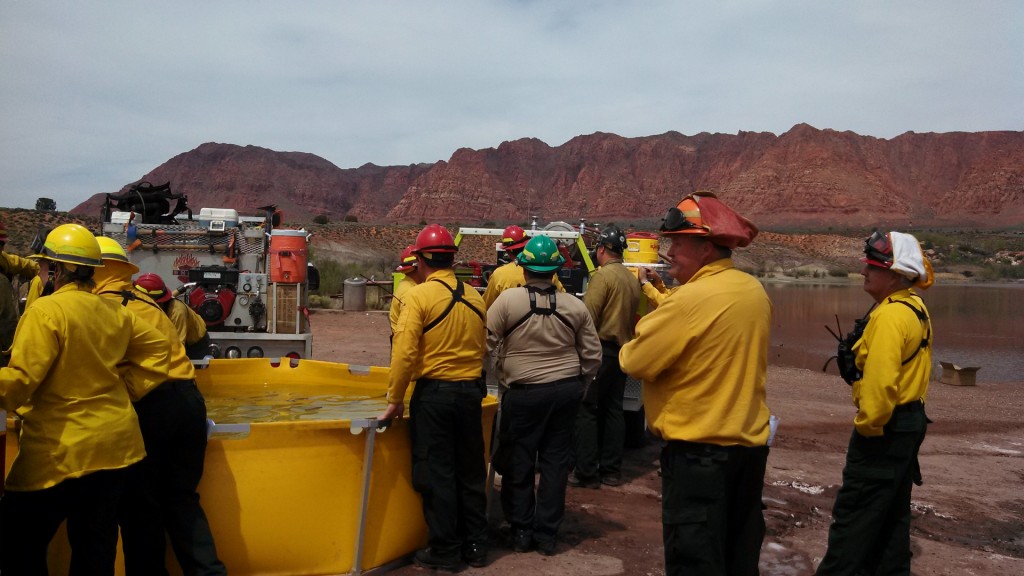
Water drafting exercises. Wlildland-urban interface firefighting training for southern Utah's five county region held in Santa Clara and Ivins, Utah, April 13, 2013 | Photo by Mori Kessler, St. George News
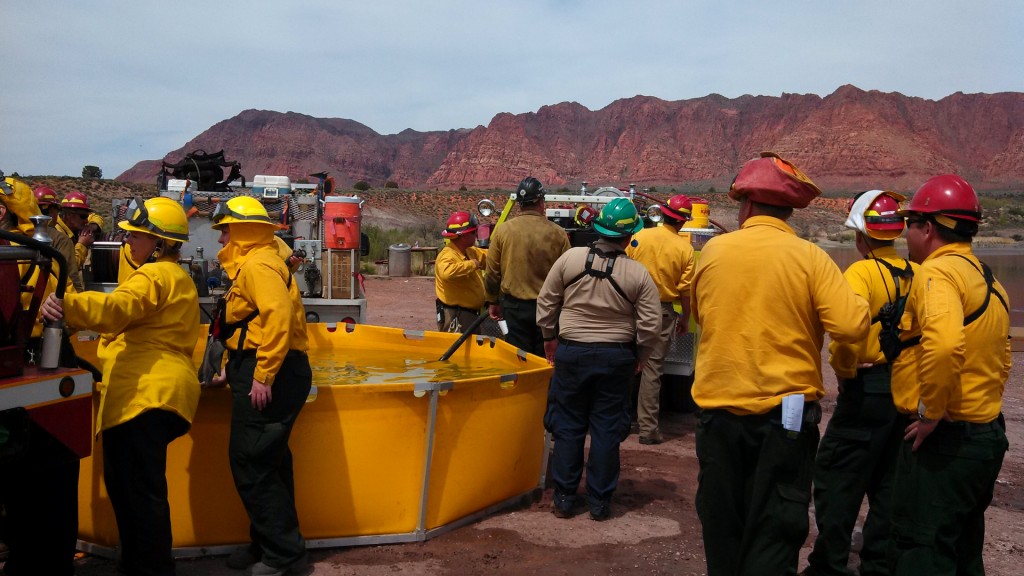
Water drafting exercises. Wlildland-urban interface firefighting training for southern Utah's five county region held in Santa Clara and Ivins, Utah, April 13, 2013 | Photo by Mori Kessler, St. George News
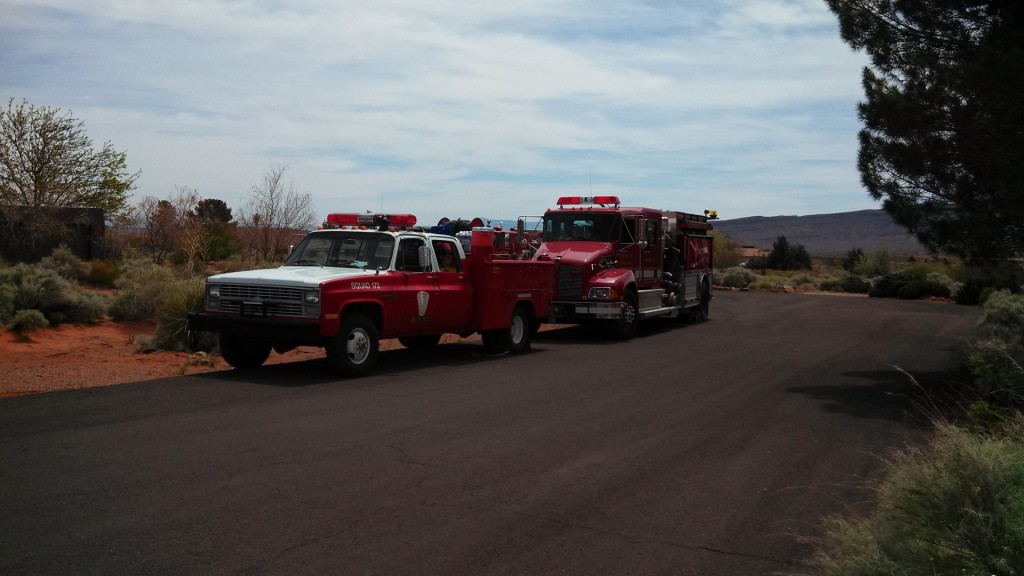
Wlildland-urban interface firefighting training for southern Utah's five county region held in Santa Clara and Ivins, Utah, April 13, 2013 | Photo by Mori Kessler, St. George News

L-R, Santa Clara Fire Chief Dan Nelson, Washington County Fire Warden Adam Heyder, Wlildland-urban interface firefighting training for southern Utah's five county region held in Santa Clara and Ivins, Utah, April 13, 2013 | Photo by Mori Kessler, St. George News
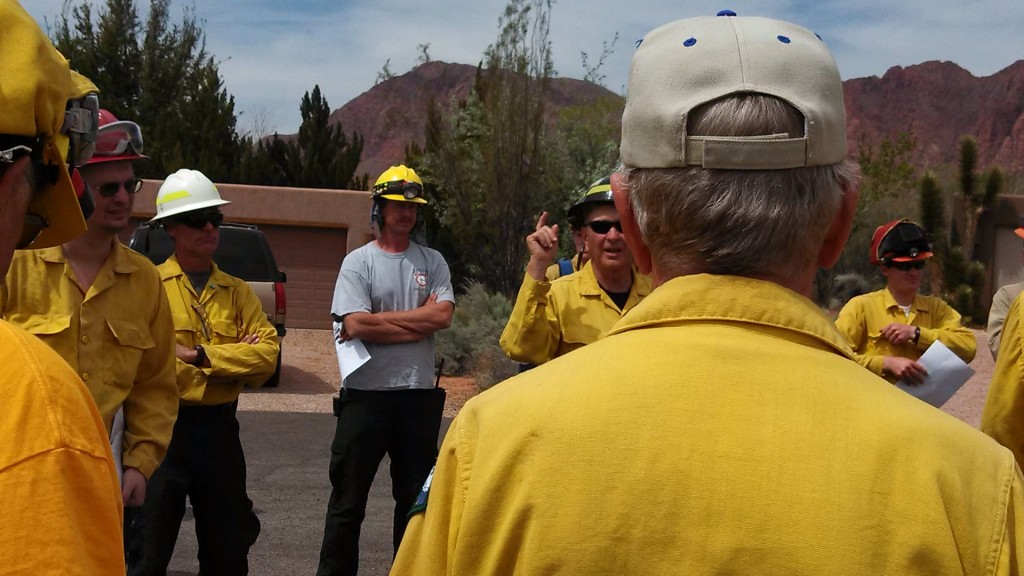
Wlildland-urban interface firefighting training for southern Utah's five county region held in Santa Clara and Ivins, Utah, April 13, 2013 | Photo by Mori Kessler, St. George News
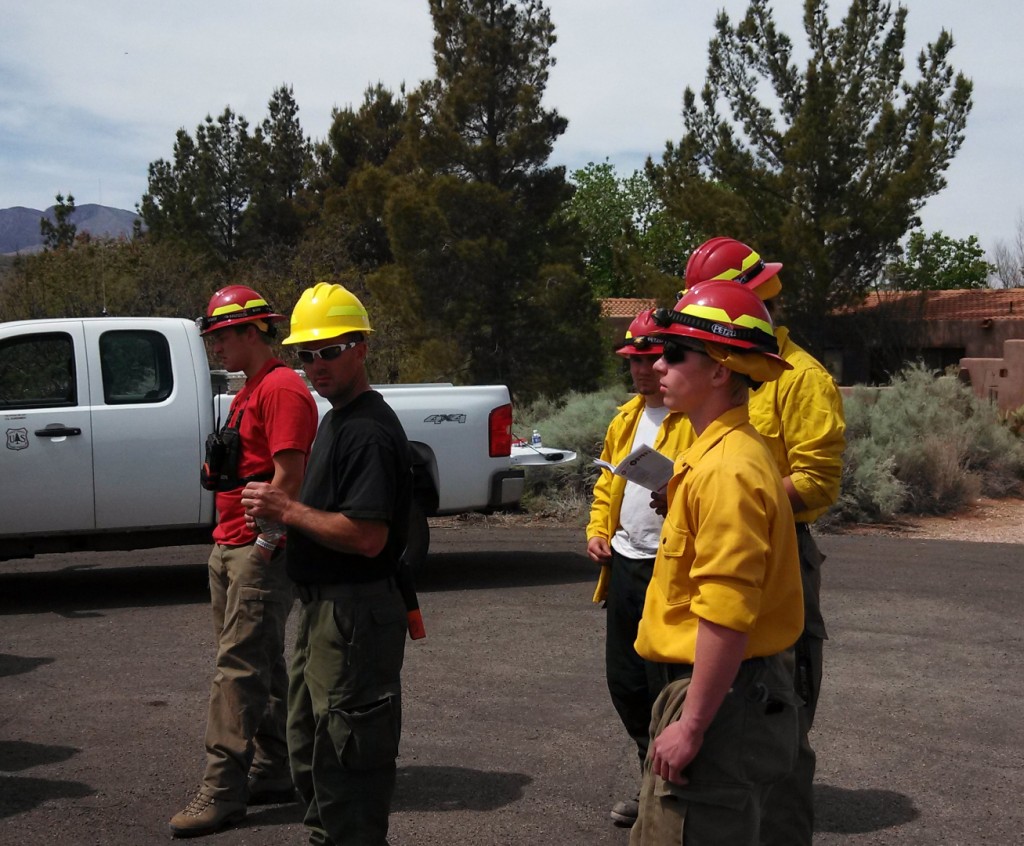
Kayenta residential community in Ivins provided a venue for structure assessment and protection exercises. Wildland-urban interface firefighting training for southern Utah's five county region held in Santa Clara and Ivins, Utah, April 13, 2013 | Photo by Mori Kessler, St. George News

Wlildland-urban interface firefighting training for southern Utah's five county region held in Santa Clara and Ivins, Utah, April 13, 2013 | Photo by Mori Kessler, St. George News
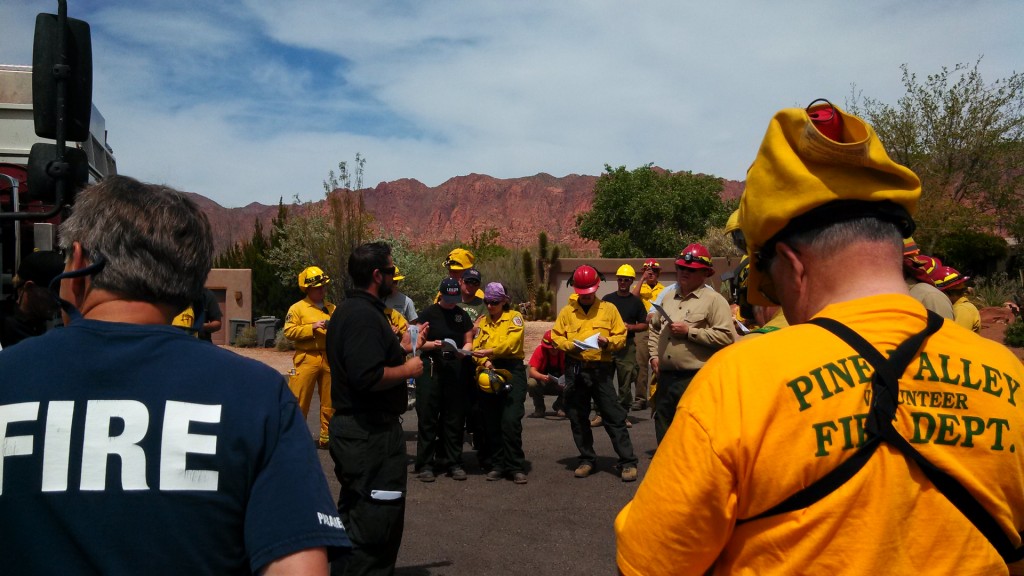
Kayenta residential community in Ivins provided a venue for structure assessment and protection exercises. Wildland-urban interface firefighting training for southern Utah's five county region held in Santa Clara and Ivins, Utah, April 13, 2013 | Photo by Mori Kessler, St. George News
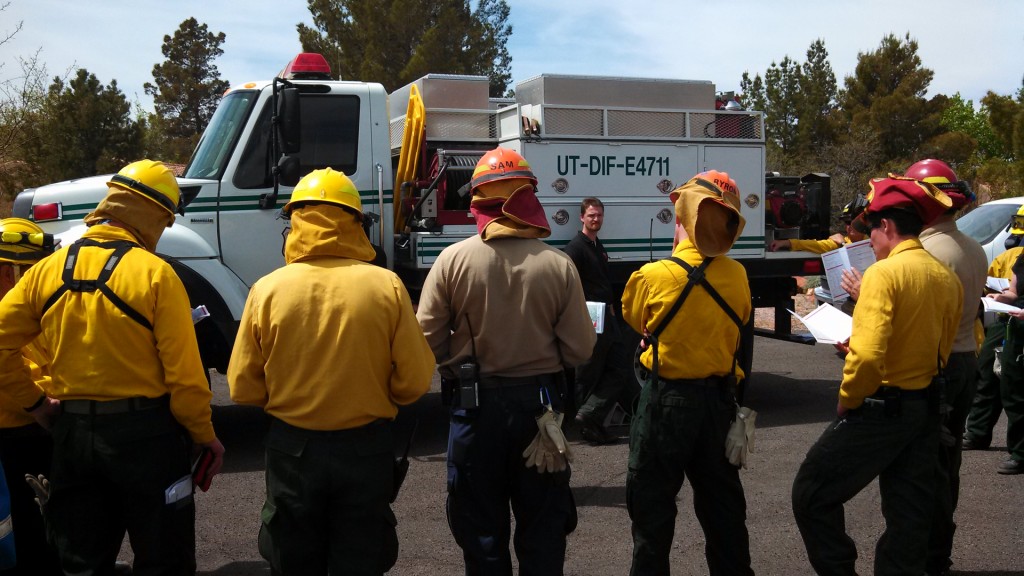
Kayenta residential community in Ivins provided a venue for structure assessment and protection exercises. Wildland-urban interface firefighting training for southern Utah's five county region held in Santa Clara and Ivins, Utah, April 13, 2013 | Photo by Mori Kessler, St. George News
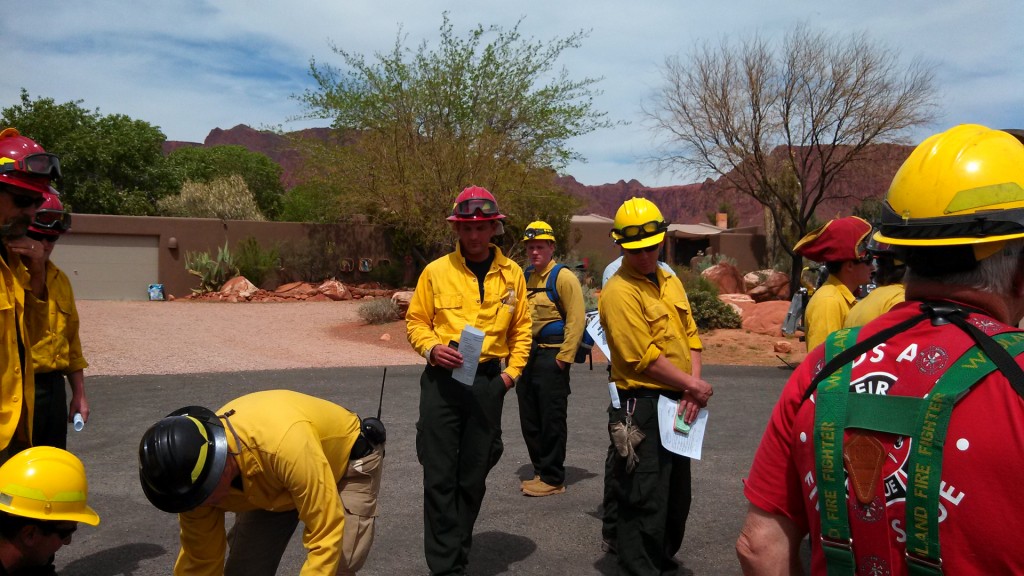
Wlildland-urban interface firefighting training for southern Utah's five county region held in Santa Clara and Ivins, Utah, April 13, 2013 | Photo by Mori Kessler, St. George News
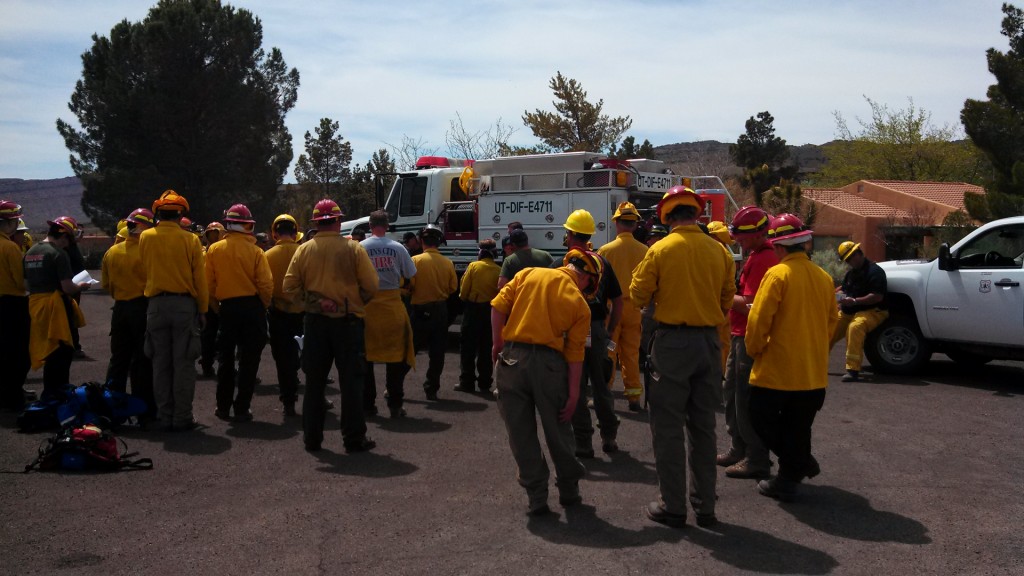
Kayenta residential community in Ivins provided a venue for structure assessment and protection exercises. Wildland-urban interface firefighting training for southern Utah's five county region held in Santa Clara and Ivins, Utah, April 13, 2013 | Photo by Mori Kessler, St. George News
St. George News Assistant Editor Mori Kessler contributed to this report.
Related posts
Human Attention Means Fire Prevention: Tips to Stop Human-Caused Fires
Email: [email protected]
Twitter: @JoyceKuzmanic
Copyright St. George News, SaintGeorgeUtah.com LLC, 2013, all rights reserved.
